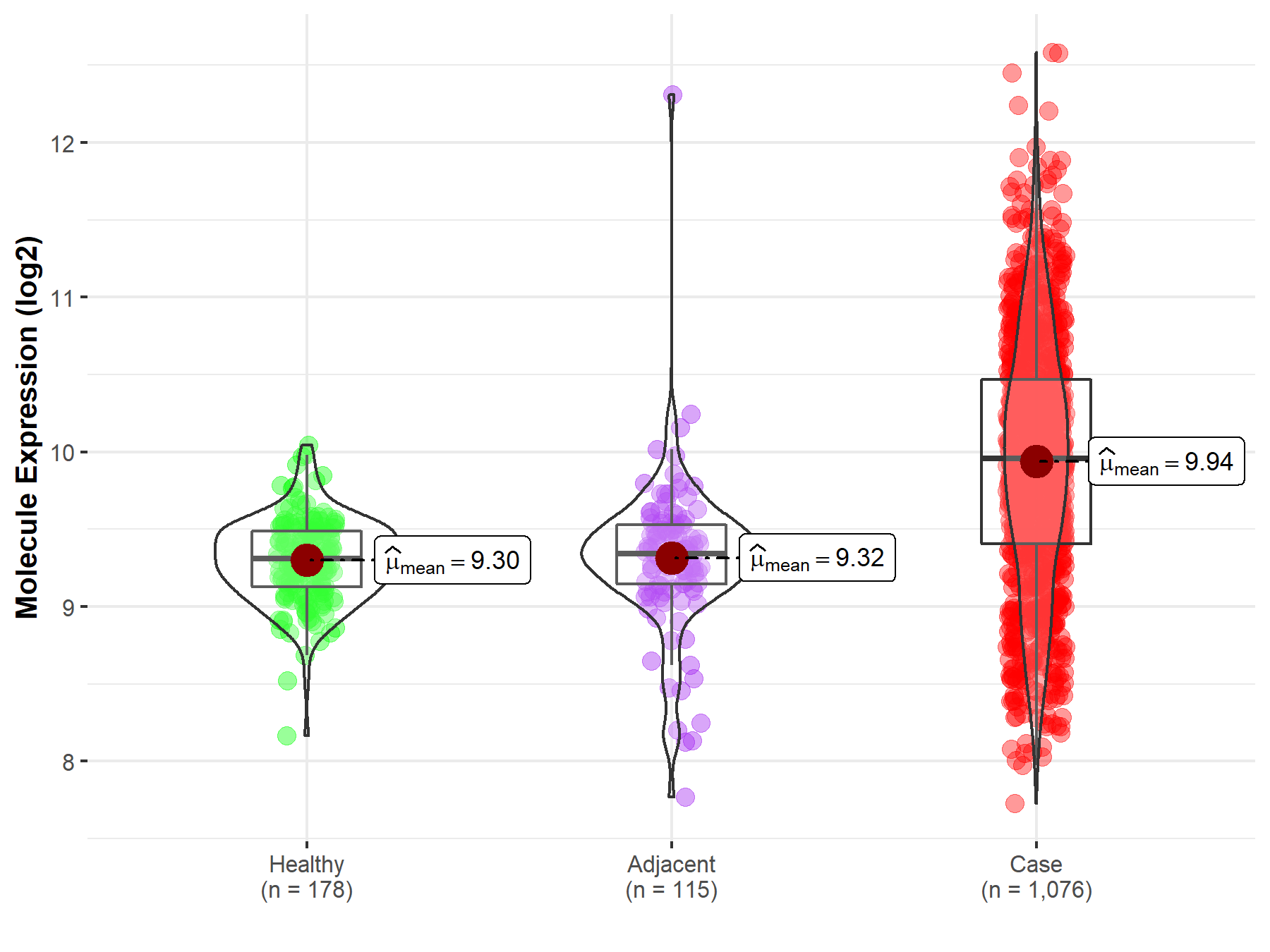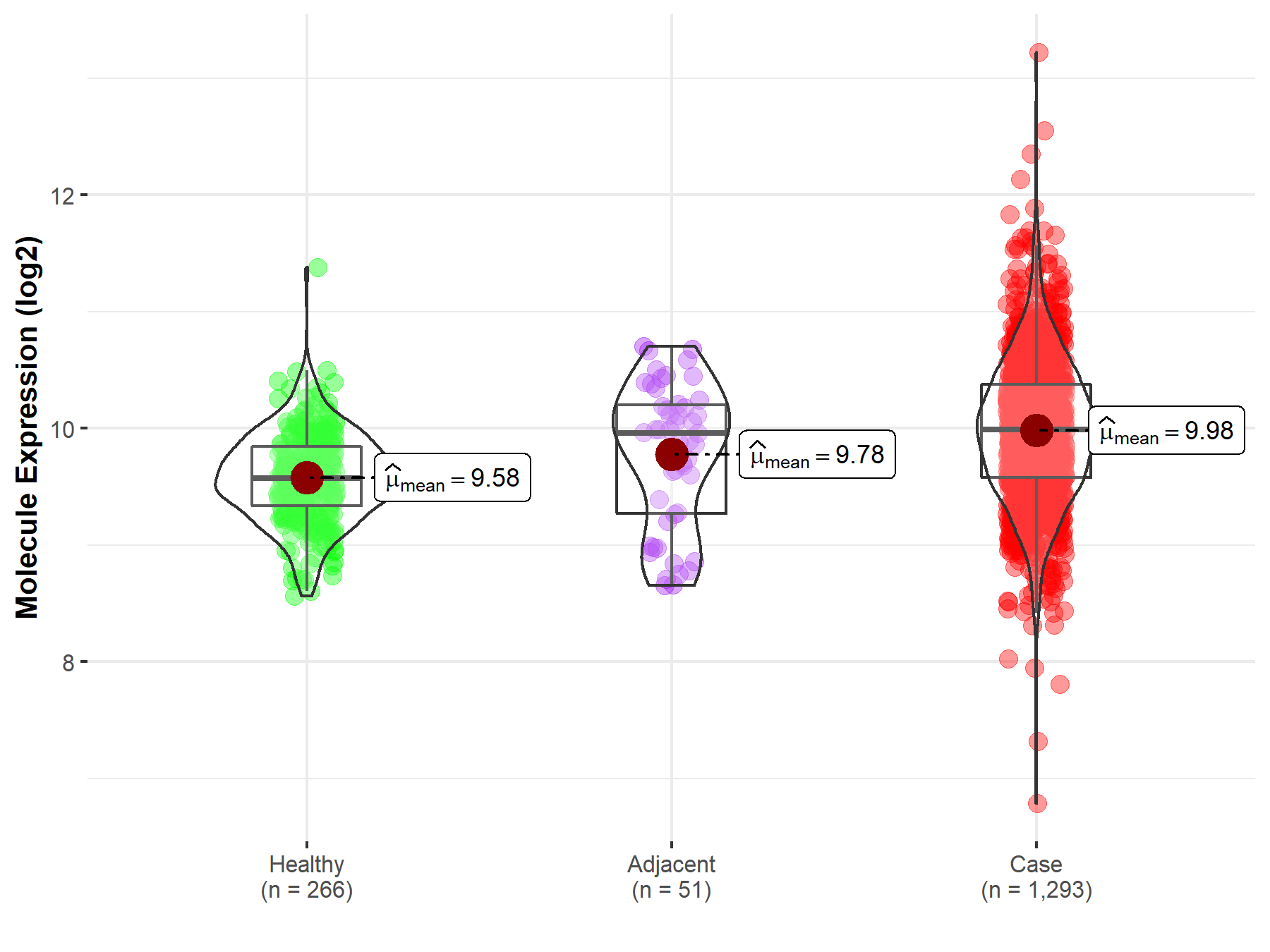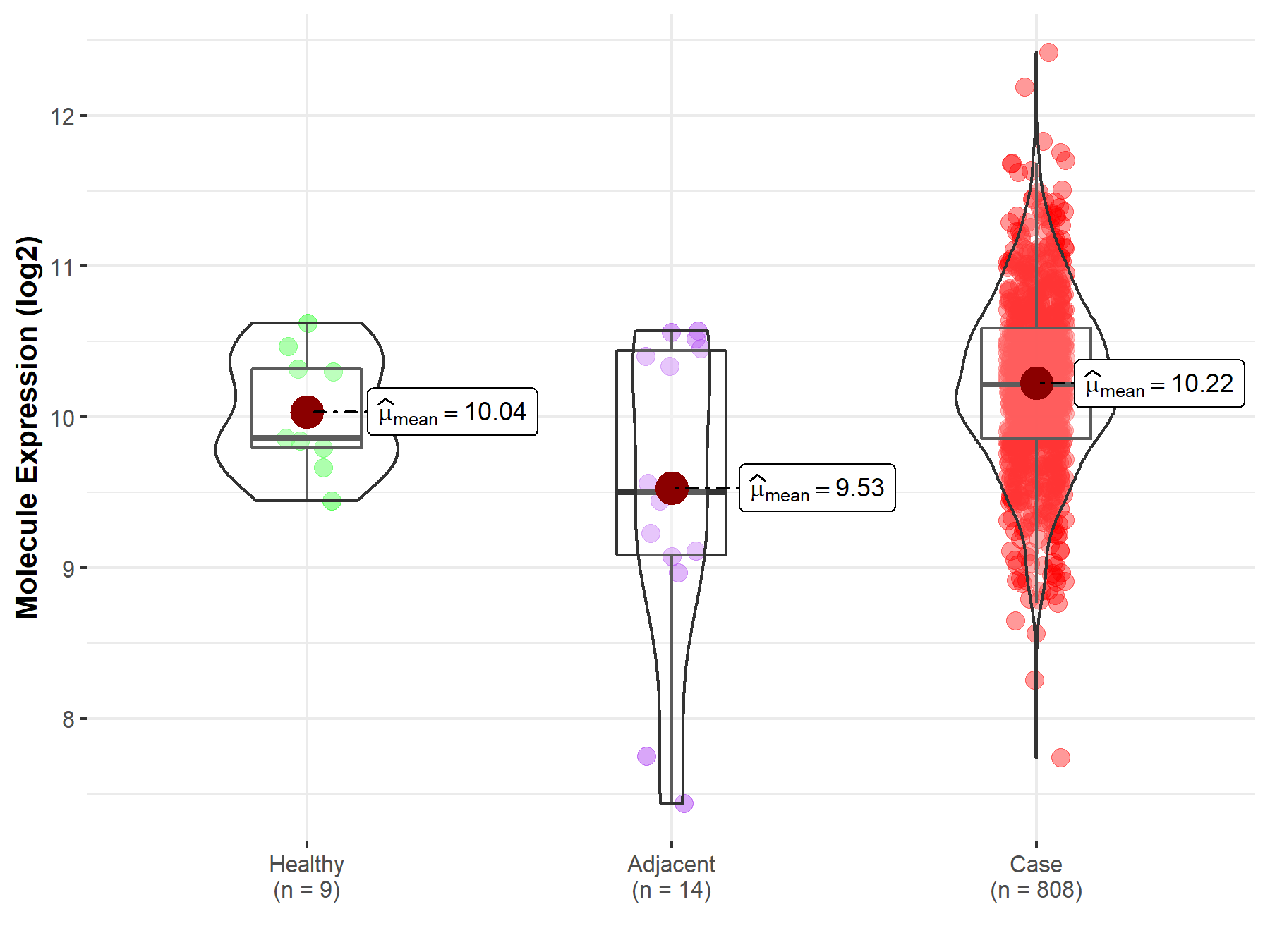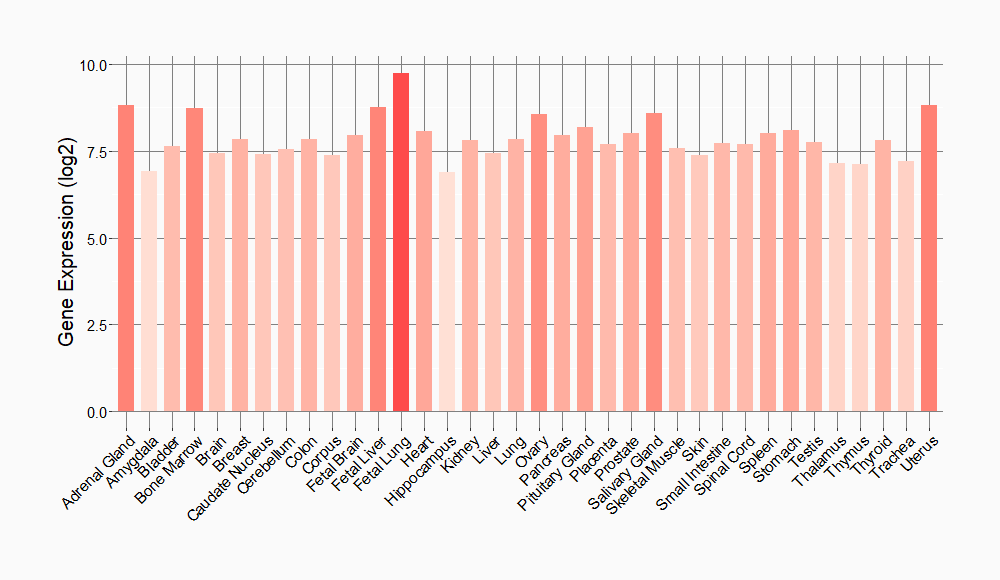Molecule Information
General Information of the Molecule (ID: Mol00042)
| Name |
Cyclin-dependent kinase 4 (CDK4)
,Homo sapiens
|
||||
|---|---|---|---|---|---|
| Synonyms |
Cell division protein kinase 4; PSK-J3
Click to Show/Hide
|
||||
| Molecule Type |
Protein
|
||||
| Gene Name |
CDK4
|
||||
| Gene ID | |||||
| Location |
chr12:57747727-57756013[-]
|
||||
| Sequence |
MATSRYEPVAEIGVGAYGTVYKARDPHSGHFVALKSVRVPNGGGGGGGLPISTVREVALL
RRLEAFEHPNVVRLMDVCATSRTDREIKVTLVFEHVDQDLRTYLDKAPPPGLPAETIKDL MRQFLRGLDFLHANCIVHRDLKPENILVTSGGTVKLADFGLARIYSYQMALTPVVVTLWY RAPEVLLQSTYATPVDMWSVGCIFAEMFRRKPLFCGNSEADQLGKIFDLIGLPPEDDWPR DVSLPRGAFPPRGPRPVQSVVPEMEESGAQLLLEMLTFNPHKRISAFRALQHSYLHKDEG NPE Click to Show/Hide
|
||||
| Function |
Ser/Thr-kinase component of cyclin D-CDK4 (DC) complexes that phosphorylate and inhibit members of the retinoblastoma (RB) protein family including RB1 and regulate the cell-cycle during G(1)/S transition. Phosphorylation of RB1 allows dissociation of the transcription factor E2F from the RB/E2F complexes and the subsequent transcription of E2F target genes which are responsible for the progression through the G(1) phase. Hypophosphorylates RB1 in early G(1) phase. Cyclin D-CDK4 complexes are major integrators of various mitogenenic and antimitogenic signals. Also phosphorylates SMAD3 in a cell-cycle-dependent manner and represses its transcriptional activity. Component of the ternary complex, cyclin D/CDK4/CDKN1B, required for nuclear translocation and activity of the cyclin D-CDK4 complex.
Click to Show/Hide
|
||||
| Uniprot ID | |||||
| Ensembl ID | |||||
| HGNC ID | |||||
| Click to Show/Hide the Complete Species Lineage | |||||
Type(s) of Resistant Mechanism of This Molecule
Drug Resistance Data Categorized by Drug
Approved Drug(s)
5 drug(s) in total
| Drug Sensitivity Data Categorized by Their Corresponding Mechanisms | ||||
|
|
||||
| Disease Class: Ovarian cancer | [1] | |||
| Sensitive Disease | Ovarian cancer [ICD-11: 2C73.0] | |||
| Sensitive Drug | Fluorouracil | |||
| Molecule Alteration | Expression | Down-regulation |
||
| Experimental Note | Revealed Based on the Cell Line Data | |||
| In Vitro Model | SkOV3 cells | Ovary | Homo sapiens (Human) | CVCL_0532 |
| Experiment for Molecule Alteration |
Luciferase reporter assay; Western blot analysis | |||
| Experiment for Drug Resistance |
MTT assay; Flow cytometry assay | |||
| Mechanism Description | As a potential tumor suppressor, miR206 directly targets CDk4 to suppress the cell growth and enhance the chemotherapy sensitivity to 5-Fu in ovarian cancer cells in vitro. | |||
| Drug Resistance Data Categorized by Their Corresponding Mechanisms | ||||
|
|
||||
| Disease Class: Breast cancer | [2] | |||
| Resistant Disease | Breast cancer [ICD-11: 2C60.3] | |||
| Resistant Drug | LY2835219 | |||
| Molecule Alteration | Expression | Up-regulation |
||
| Experimental Note | Revealed Based on the Cell Line Data | |||
| Mechanism Description | Various mechanisms, such as gene amplification, mutations and epigenetic alterations, serve to activate the cyclin D-CDK4/6-RB pathway. Overexpression of CDK4, which has been described in several cancers, may limit the efficacy of CDK4/6 inhibitors. | |||
| Drug Resistance Data Categorized by Their Corresponding Mechanisms | ||||
|
|
||||
| Disease Class: Breast cancer | [2] | |||
| Resistant Disease | Breast cancer [ICD-11: 2C60.3] | |||
| Resistant Drug | Palbociclib | |||
| Molecule Alteration | Expression | Up-regulation |
||
| Experimental Note | Revealed Based on the Cell Line Data | |||
| Mechanism Description | Various mechanisms, such as gene amplification, mutations and epigenetic alterations, serve to activate the cyclin D-CDK4/6-RB pathway. Overexpression of CDK4, which has been described in several cancers, may limit the efficacy of CDK4/6 inhibitors. | |||
| Disease Class: Lung adenocarcinoma | [3] | |||
| Resistant Disease | Lung adenocarcinoma [ICD-11: 2C25.0] | |||
| Resistant Drug | Palbociclib | |||
| Molecule Alteration | Copy number gain | . |
||
| Experimental Note | Identified from the Human Clinical Data | |||
| Drug Sensitivity Data Categorized by Their Corresponding Mechanisms | ||||
|
|
||||
| Disease Class: Melanoma | [4] | |||
| Sensitive Disease | Melanoma [ICD-11: 2C30.0] | |||
| Sensitive Drug | Palbociclib | |||
| Molecule Alteration | Missense mutation | p.R24C (c.70C>T) |
||
| Experimental Note | Identified from the Human Clinical Data | |||
| In Vitro Model | Skin sample | . | ||
| Experiment for Molecule Alteration |
Western blotting analysis; Immunohistochemistry assay | |||
| Experiment for Drug Resistance |
SRB assay | |||
| Drug Resistance Data Categorized by Their Corresponding Mechanisms | ||||
|
|
||||
| Disease Class: Breast cancer | [2] | |||
| Resistant Disease | Breast cancer [ICD-11: 2C60.3] | |||
| Resistant Drug | Ribociclib | |||
| Molecule Alteration | Expression | Up-regulation |
||
| Experimental Note | Revealed Based on the Cell Line Data | |||
| Mechanism Description | Various mechanisms, such as gene amplification, mutations and epigenetic alterations, serve to activate the cyclin D-CDK4/6-RB pathway. Overexpression of CDK4, which has been described in several cancers, may limit the efficacy of CDK4/6 inhibitors. | |||
| Drug Resistance Data Categorized by Their Corresponding Mechanisms | ||||
|
|
||||
| Disease Class: Triple negative breast cancer | [5] | |||
| Resistant Disease | Triple negative breast cancer [ICD-11: 2C60.9] | |||
| Resistant Drug | Trilaciclib | |||
| Molecule Alteration | Function | Inhibition |
||
| Experimental Note | Identified from the Human Clinical Data | |||
| Cell Pathway Regulation | AKT signaling pathway | Activation | hsa04151 | |
| Mechanism Description | Trilaciclib, a small molecule short-acting inhibitor of CDK4/6, has also been approved recently for people with small cell lung cancer, and is also expected to be clinically effective against breast cancer. r\Reducing Rb phosphorylation promotes AKT pathway activity, which may result in CDK4/6 inhibitor resistance. Trilaciclib, an intravenous and competitive CDK4/6 inhibitor, has been shown to reduce the myelotoxicity of chemotherapeutic agents by inducing transient cell cycle arrest. This drug can differentially inhibit both cytotoxic and regulatory T cells. | |||
Disease- and Tissue-specific Abundances of This Molecule
ICD Disease Classification 02

| Differential expression of molecule in resistant diseases | ||
| The Studied Tissue | Lung | |
| The Specified Disease | Lung cancer | |
| The Expression Level of Disease Section Compare with the Healthy Individual Tissue | p-value: 3.30E-72; Fold-change: 6.47E-01; Z-score: 2.39E+00 | |
| The Expression Level of Disease Section Compare with the Adjacent Tissue | p-value: 4.75E-25; Fold-change: 6.16E-01; Z-score: 1.26E+00 | |
|
Molecule expression in the normal tissue adjacent to the diseased tissue of patients
Molecule expression in the diseased tissue of patients
Molecule expression in the normal tissue of healthy individuals
|
||
| Disease-specific Molecule Abundances |

|
Click to View the Clearer Original Diagram |
| Differential expression of molecule in resistant diseases | ||
| The Studied Tissue | Skin | |
| The Specified Disease | Melanoma | |
| The Expression Level of Disease Section Compare with the Healthy Individual Tissue | p-value: 3.54E-06; Fold-change: 7.07E-01; Z-score: 1.24E+00 | |
|
Molecule expression in the diseased tissue of patients
Molecule expression in the normal tissue of healthy individuals
|
||
| Disease-specific Molecule Abundances |

|
Click to View the Clearer Original Diagram |
| Differential expression of molecule in resistant diseases | ||
| The Studied Tissue | Breast tissue | |
| The Specified Disease | Breast cancer | |
| The Expression Level of Disease Section Compare with the Healthy Individual Tissue | p-value: 1.29E-37; Fold-change: 4.17E-01; Z-score: 1.08E+00 | |
| The Expression Level of Disease Section Compare with the Adjacent Tissue | p-value: 2.19E-02; Fold-change: 3.18E-02; Z-score: 5.19E-02 | |
|
Molecule expression in the normal tissue adjacent to the diseased tissue of patients
Molecule expression in the diseased tissue of patients
Molecule expression in the normal tissue of healthy individuals
|
||
| Disease-specific Molecule Abundances |

|
Click to View the Clearer Original Diagram |
| Differential expression of molecule in resistant diseases | ||
| The Studied Tissue | Ovary | |
| The Specified Disease | Ovarian cancer | |
| The Expression Level of Disease Section Compare with the Healthy Individual Tissue | p-value: 2.00E-01; Fold-change: 3.54E-01; Z-score: 8.79E-01 | |
| The Expression Level of Disease Section Compare with the Adjacent Tissue | p-value: 2.57E-02; Fold-change: 7.12E-01; Z-score: 6.93E-01 | |
|
Molecule expression in the normal tissue adjacent to the diseased tissue of patients
Molecule expression in the diseased tissue of patients
Molecule expression in the normal tissue of healthy individuals
|
||
| Disease-specific Molecule Abundances |

|
Click to View the Clearer Original Diagram |
Tissue-specific Molecule Abundances in Healthy Individuals


|
||
References
If you find any error in data or bug in web service, please kindly report it to Dr. Sun and Dr. Zhang.
